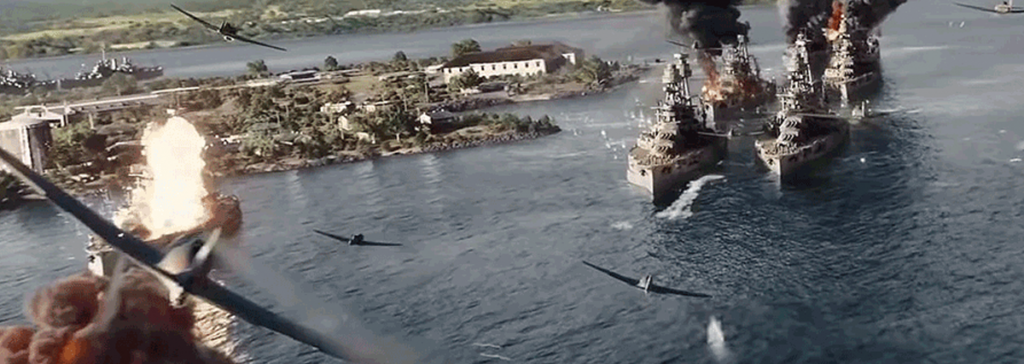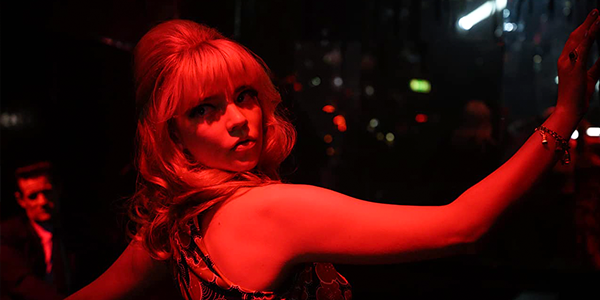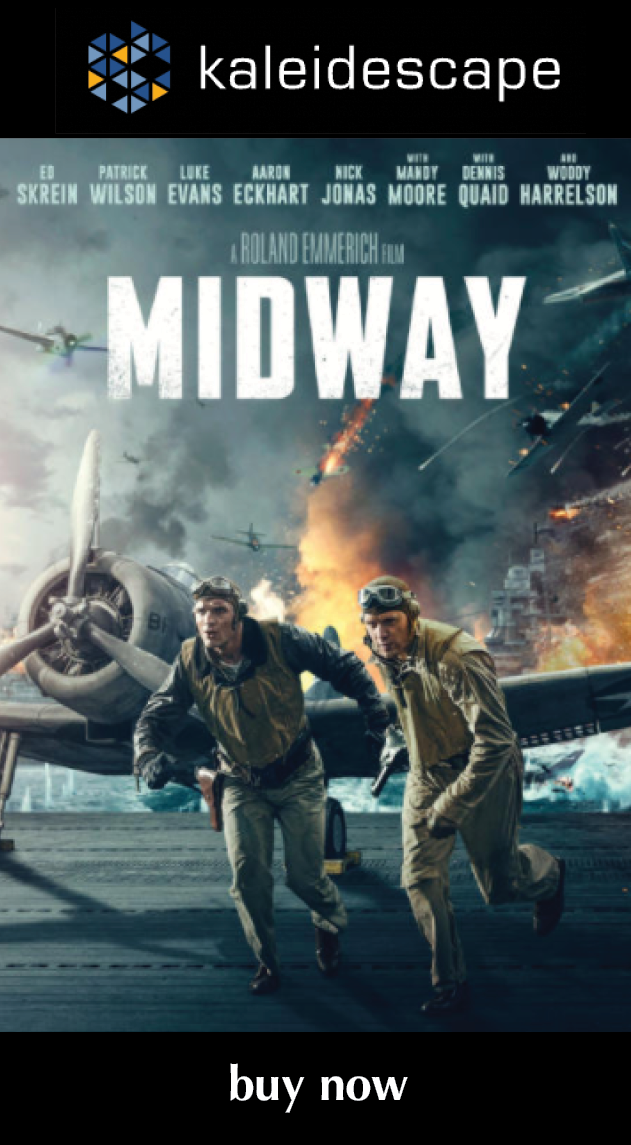
review | Midway (2019)
The most recent stab at this pivotal WWII battle gets most of the history right & has lots of action but has a few too many stars
by John Sciacca
February 11, 2020
Midway opens four years before the attack on Pearl Harbor, with Japanese Admiral Yamamoto (Etsushi Toyokawa) ominously telling US intelligence officer Edwin Layton (Patrick Wilson) that Japan will attack if its oil supplies are threatened. Cut to December 7, 1941 and the Japanese surprise attack , which delivers the US Navy its biggest defeat in history. Midway concerns itself with the events following that attack, and how the US regroups and looks to not only save itself but deliver a counterpunch to the Japanese navy, leading up to the attack known as the Battle of Midway.
With the modern-day might of the US Navy, we don’t often think about just how close to utter defeat its forces were following Pearl Harbor. On that day, more than 2,300 sailors were killed along with another 1,000-plus wounded, 18 ships were sunk or damaged, and 180 planes were destroyed. To restore naval operations, Admiral Nimitz (Woody Harrelson) is brought in to take control of the Pacific Fleet, described as “the most difficult job in the world.”
Following Pearl, the US had just three functional carriers, compared to Japan’s ten, and no functional battleships compared to Japan’s nine, with the Japanese also having more cruisers, bombers, and fighters; and much of their equipment was more modern. If the gamble at Midway didn’t pay off, the United States would have likely been sidelined for much of the war.
The movie does a good job of presenting these stakes, as well as compressing the timeline into an easy-to-follow narrative. If it’s guilty of anything, it’s of trying to cram so many stars into so many roles that none of the characters are really fleshed out. It’s hard for viewers to really care for anyone when they have just a bit of screen time before another new and famous face is trotted out. And there’s more than enough drama in the true events of the war that we don’t need to be distracted by cutaway stories about USO parties or brief shots of home life.
A perfect example is Mandy Moore cast as Ann Best, wife of hotshot pilot Dick Best (Ed Skrein), who feels like she’s just there to put her name in the credits and serves no real role in the film. Dennis Quaid is also underused as Admiral Halsey. Aaron Eckhart is given a small role as Jimmy Doolittle, a pilot awarded the Medal of Honor for leading a near-suicidal bombing mission on Tokyo who must bail out in China and evade capture from the Japanese army, which killed 250,000 Chinese civilians for aiding in Doolittle’s escape (events covered in the 2017 film In Harm’s Way). Musician Nick Jonas is brought in to portray real-life hero Aviation Machinist Bruno Gaido, receiving enough dialogue and backstory to give his character a bit of depth.
It’s tough to build much suspense when retelling a story where most viewers already know the outcome but Midway manages to give the action scenes enough tension that you can’t help but groan as bombs and torpedoes slide just past their targets, missing by scant feet. The film also blatantly telegraphs its heroes. We know early on that cocky pilot Dick Best is going to be play a big role in the air campaign, and when we see him perform a ridiculous landing maneuver onto an aircraft carrier very early on, we know we are going to see this move again later in the film. When Nimitz instructs Layton to make sure the intelligence mistakes of Pearl aren’t repeated, you know the time will come when Layton will have to convince Nimitz to trust him. Or that the friction between Dick Best and Wade McClusky (Luke Evans) will turn into a grudging respect.
Shot on Panavision DXL cameras at 8K resolution, Midway is taken from a 2K digital intermediate, not unusual for a film so heavily laden with CGI effects. Closeups feature lots of detail but don’t seem to have that Nth degree of resolution of films with a true 4K DI. There’s still plenty of detail to appreciate in clothing, from a crocheted top worn by Moore in one scene, to the wooly texture of Japanese officers’ uniforms, to the collar stitching on Americans’ shirts, to the leathery texture of the pilots’ seats.
Since none of the ships portrayed in the film still exist (at least not in their WWII-era state), they all had to be created, and the resolution does lay bare several instances of pretty blatant CGI, where things just look a bit video-gamey. The opening shot of an aircraft carrier with sailors doing PT on the deck just doesn’t ring true, especially if you focus on individual characters long enough. Nor does a scene at a graveyard in Pearl, which just looks . . . off. Any time there are so many computer-generated ships and planes on screen—which is often—there are bound to be a few instances where some shots aren’t perfect but it’s often the long shots that seem to suffer most.
HDR is used to good effect, not just to enhance the brilliant red-orange fireballs that erupt from exploding ships and planes, burning with a vibrant fury and intensity, but also to bring an extra layer of depth and punch to interior shots aboard ships where sunlight in pouring in through port holes or walkways. The ocean gleams in shades of blue, with bright highlights as the sun glints off its surface, and exterior scenes are bright enough to make you squint into the sunny skies. Blacks remain deep and dark, with no banding, which is a challenge with the varying shades of blue and grey in the skies as planes fly in and out of different lighting and cloud cover.
Beyond the visuals, Midway offers a fun ride that sounds fantastic in a home theater. In fact, you might call it a 2-hour 18-minute Dolby Atmos spectacle masquerading as a war movie. The sound mix plays a dynamic role in nearly every scene, and if anyone has every wondered if their height speakers are working or if Atmos can add to the immersion of a movie, just show them any of the aerial attack scenes where the audio lends a wonderful third dimension to plane flyovers.
Planes rip along the side walls and into the back of the room or roar past overhead, diving down on unsuspecting pilots, bullets shredding things around you. Flak shells explode left, right, above, and behind you, with bullets ricocheting all around the room.
Midway will also test your subwoofer’s mettle, with deep bass present throughout. Beyond the bombs and explosions, ships crash through waves with appropriate weight and AAA guns thump you in your seat with repeated blasts. There’s also the constant low, steady, bassy rumble as a steady background reminder that you’re aboard a warship, along with other ambient mechanical sounds to place you on board, or the deep, throaty roar of the planes’ engines. There’s also the carnage of the USS Arizona breaking up after explosions and then ripping itself apart with groans, creaks, and the rumble of crumpling steel.
Available for download now at the Kaleidescape Store ahead of its 4K disc release on February 18, Midway hits enough high points to overlook its flaws and makes for a rollicking night in your home theater, with one of the most dynamic and immersive Dolby Atmos audio tracks I’ve heard in a while.
Probably the most experienced writer on custom installation in the industry, John Sciacca is co-owner of Custom Theater & Audio in Murrells Inlet, South Carolina, & is known for his writing for such publications as Residential Systems and Sound & Vision. Follow him on Twitter at @SciaccaTweets and at johnsciacca.com.
PICTURE | HDR is used to good effect, not just to enhance the brilliant fireballs that erupt from exploding ships and planes but also to bring an extra layer of depth and punch to interior shots aboard ships where sunlight in pouring in through port holes or walkways
SOUND | You might call Midway a 2-hour 18-minute Dolby Atmos spectacle masquerading as a war movie, with the mix playing a dynamic role in nearly every scene
© 2025 Cineluxe LLC






